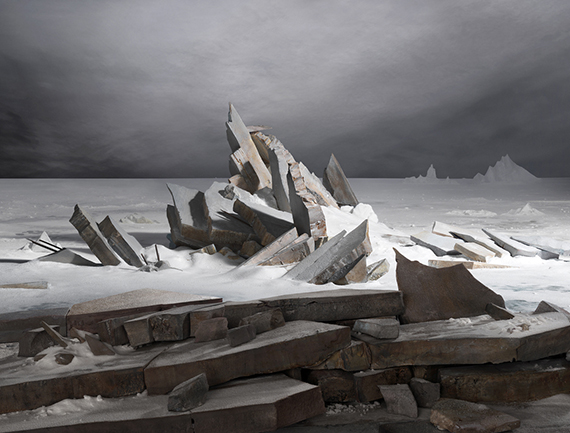
James Casebere »
The Spatial Unconscious
Exhibition: 25 Sep 2025 – 17 Jan 2026
Thu 25 Sep 18:00

The Williamsburg Biannual
20 South 4th Street
NY 11249 Brooklyn
+1-718-
info@williamsburgbiannual.org
williamsburgbiannual.org
by appt
James Casebere
The Spatial Unconscious
Williamsburg Biannual, Brooklyn, NY
September 25, 2025 – January 17, 2026
Opening reception: Thursday, September 25, 6–9pm
The Williamsburg Biannual and Sean Kelly are delighted to announce James Casebere: The Spatial Unconscious, a major presentation of the artist’s work at the Williamsburg Biannual. Spanning four decades, and three floors, this exhibition brings together a selection of Casebere’s rarely seen works in various media many of which have not previously been shown in New York. The exhibition includes working Polaroids, waterless lithographs, early black-and-white and recent color photographs, as well as new sculpture. Casebere has long been recognized for his innovative approach to photography, merging the sculptural and the architectural with the conceptual. As a central figure of the Pictures Generation, his practice has consistently challenged the boundaries of medium, using photography not as documentation but as the artwork itself to explore how individual and collective realities are constructed.
Casebere’s photographs address issues ranging from the psychological and personal to the social, historical, and political. Working with meticulously built models, he creates images that blur the line between fact and fiction, evoking the tension between permanence and fragility. His process - building, altering and re-imagining architectural forms - foregrounds photography as more than documentation, transforming it into a primary event that interrogates memory, truth, and power while reflecting on the shifting conditions of contemporary life.
Casebere’s Shou Sugi Ban sculptures extend his longstanding engagement with architecture, embracing materiality, light, and space as central concerns. Constructed from The Williamsburg Biannual | 333 Kent Ave, Brooklyn, NY 11249 | williamsburgbiannual.org sustainable bamboo plywood using the traditional Japanese technique of Shou Sugi Ban, these large-scale geometric forms evoke both organic growth and architectural structure. Their charred surfaces embody a duality of preservation and destruction, tradition and innovation, offering an analog, sensory experience that underscores the passage of time while suggesting new possibilities for how we inhabit and imagine space.
Deeply informed by architecture, literature, politics, and cultural history, Casebere’s work reflects a persistent engagement with questions of place and identity, as well as broader social forces. From his earliest black-and-white experiments to his most recent photographs and sculptures, The Spatial Unconscious offers a rare opportunity to trace the evolution of an artist whose practice continues to mirror and question the narratives that shape both history and the present moment.
James Casebere, born in 1953, is a pioneering figure in constructed photography whose practice over the past four decades has explored the intersections of architecture, history, and narrative. After studying at Michigan State University, the Minneapolis College of Art and Design, BFA, 1976, the Whitney Independent Study Program in 1977, and CalArts MFA in 1979, Casebere began developing meticulously crafted models based on architectural, cinematic, and art historical sources, which he photographs to create evocative images of abandoned or depopulated spaces. His work has shifted from examinations of American mythologies to institutional architecture, probing how social structures—such as commerce, labor, religion, and law—shape collective realities. Casebere is widely celebrated and collected by major institutions including the Whitney Museum, MoMA, the Guggenheim, LACMA, and the Victoria and Albert Museum, amongst others. Casebere has received numerous awards, including fellowships from the Guggenheim Foundation and the American Academy in Rome. Survey exhibitions of his work have been presented at Haus der Kunst, Munich; BOZAR, Brussels; and Espace Images Vevey, Switzerland.